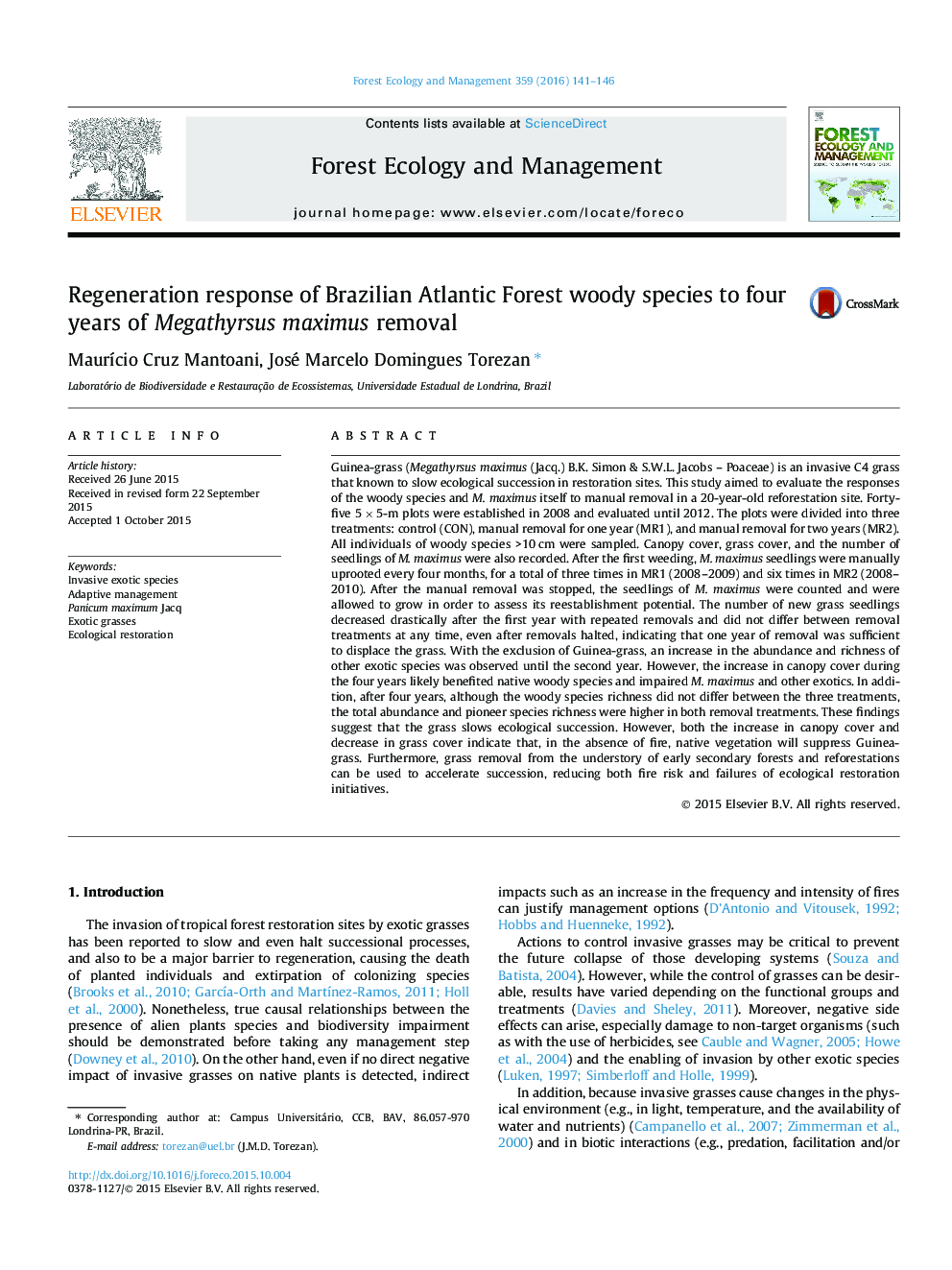| Article ID | Journal | Published Year | Pages | File Type |
|---|---|---|---|---|
| 6542644 | Forest Ecology and Management | 2016 | 6 Pages |
Abstract
Guinea-grass (Megathyrsus maximus (Jacq.) B.K. Simon & S.W.L. Jacobs - Poaceae) is an invasive C4 grass that known to slow ecological succession in restoration sites. This study aimed to evaluate the responses of the woody species and M. maximus itself to manual removal in a 20-year-old reforestation site. Forty-five 5Â ÃÂ 5-m plots were established in 2008 and evaluated until 2012. The plots were divided into three treatments: control (CON), manual removal for one year (MR1), and manual removal for two years (MR2). All individuals of woody species >10Â cm were sampled. Canopy cover, grass cover, and the number of seedlings of M. maximus were also recorded. After the first weeding, M. maximus seedlings were manually uprooted every four months, for a total of three times in MR1 (2008-2009) and six times in MR2 (2008-2010). After the manual removal was stopped, the seedlings of M. maximus were counted and were allowed to grow in order to assess its reestablishment potential. The number of new grass seedlings decreased drastically after the first year with repeated removals and did not differ between removal treatments at any time, even after removals halted, indicating that one year of removal was sufficient to displace the grass. With the exclusion of Guinea-grass, an increase in the abundance and richness of other exotic species was observed until the second year. However, the increase in canopy cover during the four years likely benefited native woody species and impaired M. maximus and other exotics. In addition, after four years, although the woody species richness did not differ between the three treatments, the total abundance and pioneer species richness were higher in both removal treatments. These findings suggest that the grass slows ecological succession. However, both the increase in canopy cover and decrease in grass cover indicate that, in the absence of fire, native vegetation will suppress Guinea-grass. Furthermore, grass removal from the understory of early secondary forests and reforestations can be used to accelerate succession, reducing both fire risk and failures of ecological restoration initiatives.
Related Topics
Life Sciences
Agricultural and Biological Sciences
Ecology, Evolution, Behavior and Systematics
Authors
MaurÃcio Cruz Mantoani, José Marcelo Domingues Torezan,
